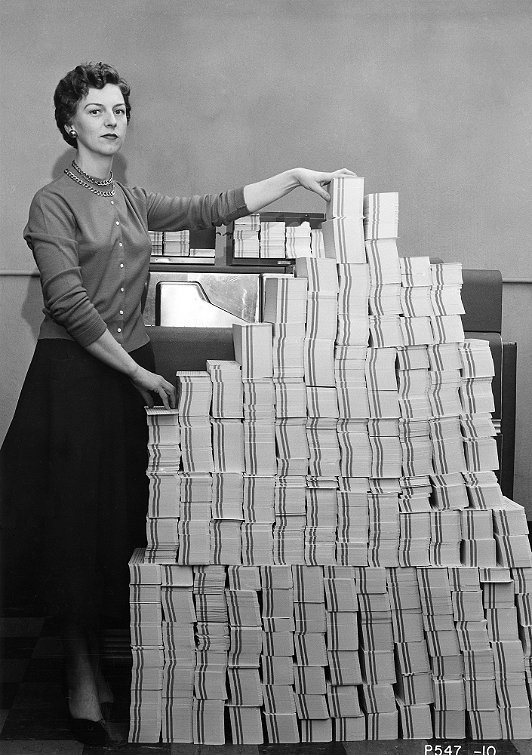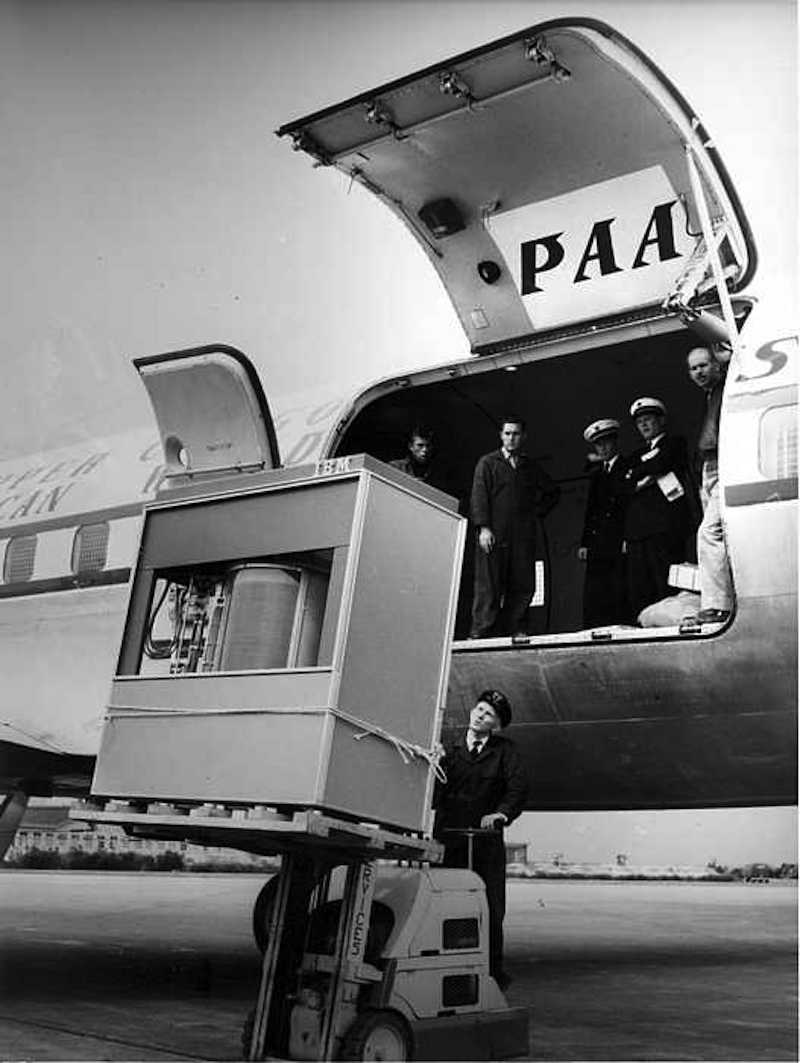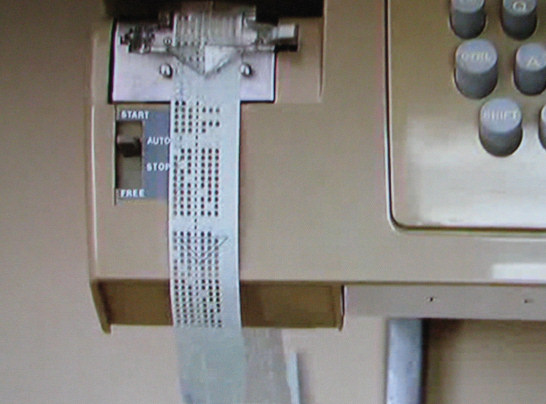1955-65: Transistors and Batch Systems
Programming languages and operating systems (as we know them today)
still unheard of.
Collections of subroutines (procedures) to drive peripherals and to
evaluate trigonometric functions were the first examples of operating
systems services. The mid-1950s saw the user (still as the programmer)
submitting a deck of punched Hollerith cards describing a job to be
executed.

|
 Given the high cost of computers, ways to increase their utility were
quickly sought.
The general solution was the batch system.
Similar/related programs, perhaps each requiring the FORTRAN (FORmula
TRANslation) compiler, or a set of mathematical routines, were
batched
together so that the required routines need only be physically loaded
once.
Given the high cost of computers, ways to increase their utility were
quickly sought.
The general solution was the batch system.
Similar/related programs, perhaps each requiring the FORTRAN (FORmula
TRANslation) compiler, or a set of mathematical routines, were
batched
together so that the required routines need only be physically loaded
once.
|

|
Programs were first written on paper tape, in the emerging FORTRAN
language or in assembly language, and then copied to punched cards.
Such decks of cards included job control cards,
the program itself, and often the program's data.
 Jobs submitted by different users were sequenced automatically by the
operating system's resident monitor.
Early peripherals,
such as large magnetic tape drives,
were used to batch input (jobs and data) and
spool (from Simultaneous Peripheral Operation OnLine) output.
Jobs submitted by different users were sequenced automatically by the
operating system's resident monitor.
Early peripherals,
such as large magnetic tape drives,
were used to batch input (jobs and data) and
spool (from Simultaneous Peripheral Operation OnLine) output.
CITS2002 Systems Programming, Lecture 3, p9, 29th July 2024.
|


 CITS2002
CITS2002 CITS2002 schedule
CITS2002 schedule Jobs submitted by different users were sequenced automatically by the
operating system's resident monitor.
Early peripherals,
such as large magnetic tape drives,
were used to batch input (jobs and data) and
spool (from Simultaneous Peripheral Operation OnLine) output.
Jobs submitted by different users were sequenced automatically by the
operating system's resident monitor.
Early peripherals,
such as large magnetic tape drives,
were used to batch input (jobs and data) and
spool (from Simultaneous Peripheral Operation OnLine) output.